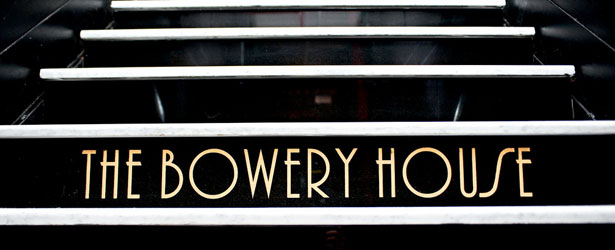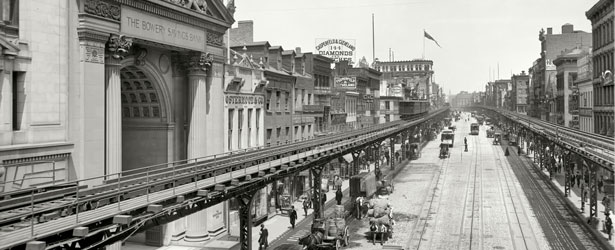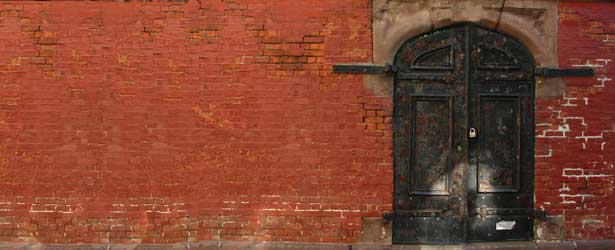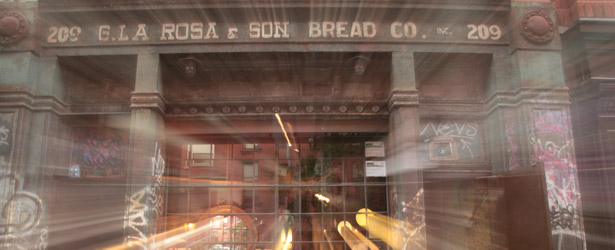







History
The historic 1.5 mile Bowery is the oldest thoroughfare on Manhattan Island. Long before Broadway became Manhattan's signature road, the lane that would become the Bowery wound to the island's upper reaches. It was a dirt trail etched by the bare feet and moccasins of the Native Americans before the Dutch arrived and situated their farms. The Bowery's first residents were ten families of freed slaves in 1645. Then in the late 17th century when the Dutch settled Manhattan island, they named the path Bouwerij road. “Bouwerij” is an old Dutch word for "farm" and was appropriate as it connected farmlands and estates on the outskirts to the heart of the city in today's Wall Street and Battery Park area. By the end of the 18th century, the Bowery became New York’s most elegant street, lined with grand theaters, soaring banks, mansions of prosperous residents and fashionable shops.
During the Civil War era, the mansions and shops had given way to low-brow concert halls, brothels, German beer gardens, pawn shops, and flophouses. The Bowery also marked the eastern border of the slum of "Five Points" - popularized in the movie Gangs of New York. The Bowery then became the turf of one of America's earliest street gangs, the native Bowery Boys. Additionally, at the end of the 19th century, many low quality tenements were built to accommodate the many immigrants pouring into the city. The construction in 1878 of the Third Avenue Elevated Train (deconstructed in 1955) over the Bowery added pollution, darkened the streets below and further precipitated the decline of the area. It is also a fact that the Bowery is the only major thoroughfare in New York never to have had a single church built upon it.
In the 1940s through the 1990s, the Bowery was New York City's "Skid Row," notable for "Bowery Bums" - a remarkable feat considering its prime location and beautiful roster of architecture. Today, the neighborhood has maintained its authenticity and restored much of its historic architecture while adding world class boutique hotels, independent retailers, cafes, bars, restaurants, beer gardens and art museums. Our guests will remember the Bowery for its raw beauty and prime location as it intersects multiple cultures and is conveniently located at the nexus of Little Italy, Nolita, Chinatown, SoHo and the Lower East Side.
Our loft-style property, 220 Bowery, originally opened as The Prince Hotel in 1927. In the 1940's the hotel was reconfigured to serve as the temporary lodging for soldiers returning home from World War II. All floors of The Prince Hotel were rebuilt with single room cabins that were just large enough for a bed and storage of essential items. The bathrooms were made communal so that the hotel operators could maximize its occupancy and house as many soldiers as possible.
With its prime location and easy access to vices such as gambling, prostitution and saloons - some of the soldiers never left and decided to make the majority of the 200 cabins their long-term homes. It was in these single rooms that many of the Bowery’s most eccentric characters lived for decades adding to the lore and drama of New York’s former skid row.
At The Bowery House, we have decided to preserve and restore every detail of the remarkable 1940’s cabin craftsmanship and in turn provide unique, authentic and historic accommodations to travelers from around the world. Part museum and part hotel, we hope you enjoy not only the neighborhood but also the living history that is The Bowery House.